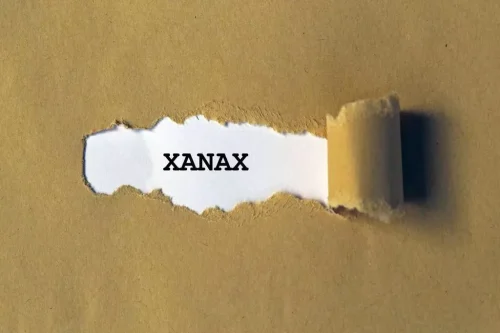
Lastly, pharmacists play a role in confirming the proper antibiotic coverage to prevent postoperative infection. Rosacea is a chronic skin condition that is characterized by facial flushing—especially in the nasal area or cheeks—and irregular redness. As part of rosacea, small, red, and pus-filled bumps might also form on the face.
Is A Big Nose A Sign Of Alcoholism?
However, this treatment is out of favor due to the causation of secondary skin malignancies. Rosacea affects the nose more in men and the cheeks more in women, which makes men much more likely to get rhinophyma than women. Rhinophyma has not been shown to be connected to alcohol use, and calling rhinophyma an “alcoholic nose” is not medically correct. In the past, and even in modern times, rhinophyma was largely considered to be a side-effect of alcoholism or alcohol use disorder.

Alcoholic Nose (Rhinophyma): The Real Cause, and How to Treat It
- W.C. Fields was a popular U.S. comedian who appeared on stage and in several movies in the first half of the twentieth century.
- For people who develop rhinophyma, their face skin thickens, especially around the nose.
- With time, rosacea can worsen, and for people who drink alcohol heavily, this can mean developing rhinophyma.
- These complications may increase the likelihood of experiencing nosebleeds.
Sometimes, this can include relying on ablative lasers or electrical currents (a treatment known as diathermy) to help remove excess tissue. If you already have rosacea or rhinophyma, drinking can make them worse and https://ecosoberhouse.com/ affect the appearance of the nose. “The authors proposed that this connection between alcohol intake and rhinophyma may be because alcohol is such a strong inducer of flushing and vasodilation,” Dr. Baldwin said.
Why Alcohol Abuse Gets The Blame For Rhinophyma
The condition is much more common in males than females and usually develops between the ages of 50–70. One of the biggest lifestyle change options that people have for improvement or prevention is to stop consuming alcohol. Rhinophyma can be difficult on a person’s self-esteem, as why do alcoholics have weird noses it can be difficult to hide and can inspire a lot of judgment and social stigma. Rosacea flare-ups can also be caused by the consumption of other substances, such as hot drinks, chocolate, or spicy foods. Currently, no single thing has been shown as the direct cause of rhinophyma.
- The condition gradually develops after the onset of the initial stages of rosacea, which typically happen between the ages of 25 and 50.
- Rhinophyma — also sometimes referred to as “alcoholic nose” — is a physical condition that many people assume is caused by alcohol use disorder (alcoholism).
- It will also cover the medication and lifestyle changes that may help prevent rhinophyma from getting worse.
- Because rhinophyma often develops following a severe case of rosacea, it’s important to watch out for symptoms of this unique skin condition.
If you’re worried about alcohol consumption leading to drinker’s nose or rhinophyma, you may also show signs of alcohol abuse. Like rhinophyma, rosacea can affect anyone including those individuals who have darker skin as well as children and teens. Addiction treatment is available for those who are struggling with alcohol abuse or addiction.
No laboratory or radiographic tests are necessary for this condition. Clinical evaluation of the patient determines the type and grade of rhinophyma. The severity and sub-types of rhinophyma get classified in different ways. Some evidence shows that a person can be genetically predisposed to rhinophyma, as it runs in families of Scandinavian, English, Scottish, and Eastern European descent. BetterHelp offers affordable mental health care via phone, video, or live-chat.
Postoperative and Rehabilitation Care

The social stigma related to alcohol abuse and alcoholic nose highlights the social pressures and barriers that still exist for those with substance abuse issues. Current research indicates that people with rhinophyma often have a genetic predisposition to or family history of rosacea, especially if treatments for their rosacea prove ineffective. Alcohol use disorder and skin conditions like rosacea are connected because of the potential for alcohol to worsen existing skin conditions.
Contact our team at AddictionResource.net today for more information. Surgery, including laser treatment or dermabrasion, may be necessary to remove large bumps on the nose from rhinophyma if they interfere with breathing. Dermatology experts recommend anti-acne treatments, moisturizing your dry skin caused by rosacea, and using sunscreen lotions.
One study found that out of 108 patients with rosacea, only 15 were noted to also have rhinophyma, almost all of whom were men. There are four subsets of rosacea, and rhinophyma is thought to be the most severe of them all. It’s a progressive condition that forms gradually over years and is thought to be the result of an untreated, less severe form of rosacea. While alcohol can stay in your system and cause damage, there is thought to be very little connection between alcohol use and this skin condition. Addiction Resource aims to provide only the most current, accurate information in regards to addiction and addiction treatment, which means we only reference the most credible sources available. If you’re looking for information about the condition known as alcoholic nose or drinker’s nose, here are answers to some of the most frequently asked questions.
